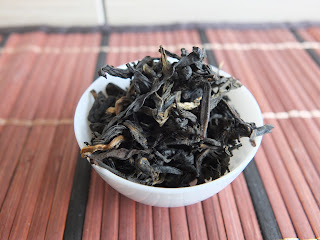I was pleasantly surprised when I sampled this 2007 Changtai ripe brick. This is a 2007 production and this tea had been stored in Malaysia for almost 10 years. The 250g brick is individually wrapped and packed 4 bricks in a larger wrapper.
My readers would know that I had been encouraging readers in 2 aspects when it comes to pu erh tea:
a) breaking up a brick or cake into pieces and storing in a tea caddy for 2 weeks before drinking
b) use boiling water when brewing the tea
These 2 simple steps, in my own opinion, does make the pu erh tea (raw and ripe) more amplified in both taste and aroma. I have tea drinker friends that only leave a cake or brick unbroken and only peeling off a small chunk whenever they want to brew their tea. I can understand tea caddies does need space. I would like to suggest using smaller tea caddies or tea boxes, with about 50-100g capacity, might helped address the space issue. As for my readers using electric or stove kettles, I recommend a quick reboil prior to every infusion. As the water is already hot, such reboiling should take less than 30 seconds. These 2 steps would make your pu erh tea session more yummy.
Back to the Changtai tea. I could get about 8 strong infusions from a tea session. The tea is mellow and smooth with nice earthy herbal notes with a faintly sweet aftertaste. Happy days.












